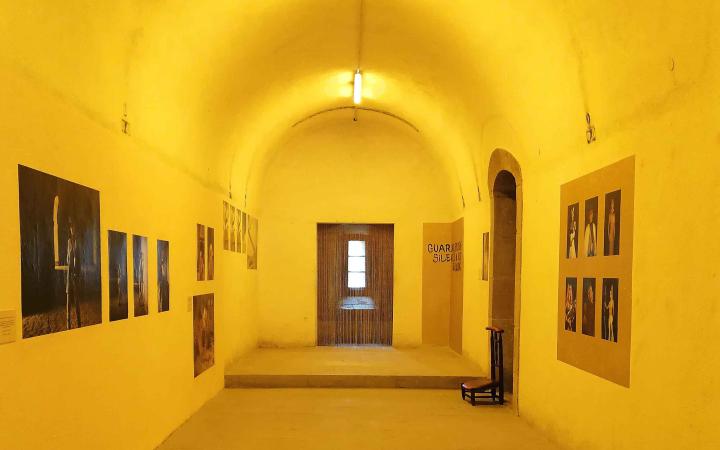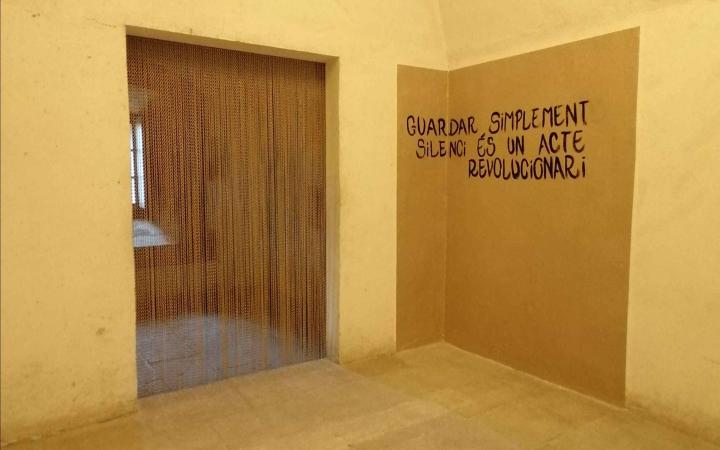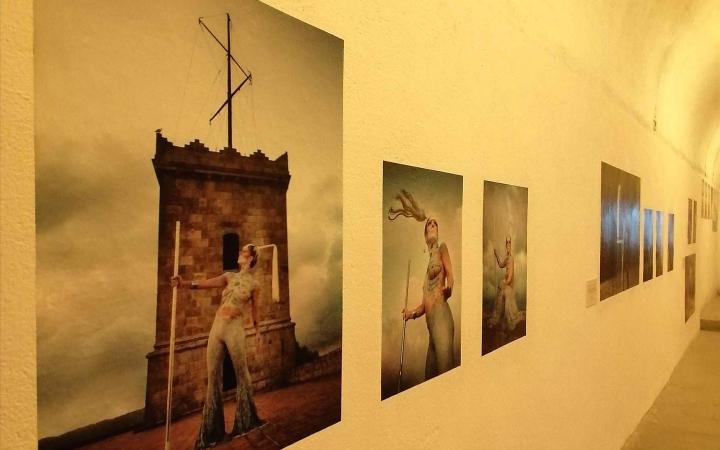Under these questions, the artist proposes from his imagination to fill Montjuïc Castle with all the possible women who could inhabit it today, yesterday, and tomorrow, with an expressly sought timelessness, embodied by the multidisciplinary artist Arantza Labuena.
Un Castell Propi is a spin-off of Kiri Island, a scenic piece created by Arantza Labuena within the framework of the ICUB Creation and Museums program and presented in the 2021 edition of the Greek Festival.
Un Castell Propi aims to redefine the use of the Montjuïc fortress through the action of inhabiting it vs. the action of conquering it.
The title "Un Castell Propi" refers explicitly to the title of the novel by the writer Virginia Woolf A Chamber of One's Own, where the novelist questions the relationship between poverty and artistic creation/writing, taking for granted that it is the women who are poor by not having the purchasing power for themselves and having to depend financially on their husbands "What conditions are necessary for the creation of a work of art?" says the writer. What are the conditions for the castle to be artistically occupied/inhabited by a woman?
Why the chapel space?
The chapel space offers the ideal framework for the re-signification of space based on the Woman and her body, in all its expressions, as the sacred, as the powerful, through multiple perspectives and representations.
Since the imposition of ecclesiastical power as the possessor of a single truth and the creation of The Inquisition, women have not only been tortured and killed for the simple fact of being women but have also been relegated to the domestic space, remaining thus separated from the public space and the spaces of religious liturgies.
The bloody, impure woman. The strong, dangerous woman.
A pregnant woman is a reproductive object. The woman who is not a woman, invisible.
The silenced, necessary woman.
The woman for being a woman, was mutilated.
We will enter a space that has lost its religious function and has been consecrated again by the artist; turning it into a space for reflection, deconstruction, and the proposal of new narratives based on images, objects, texts, and lights, with a kitsch aesthetic that underlines "hoarderism".





